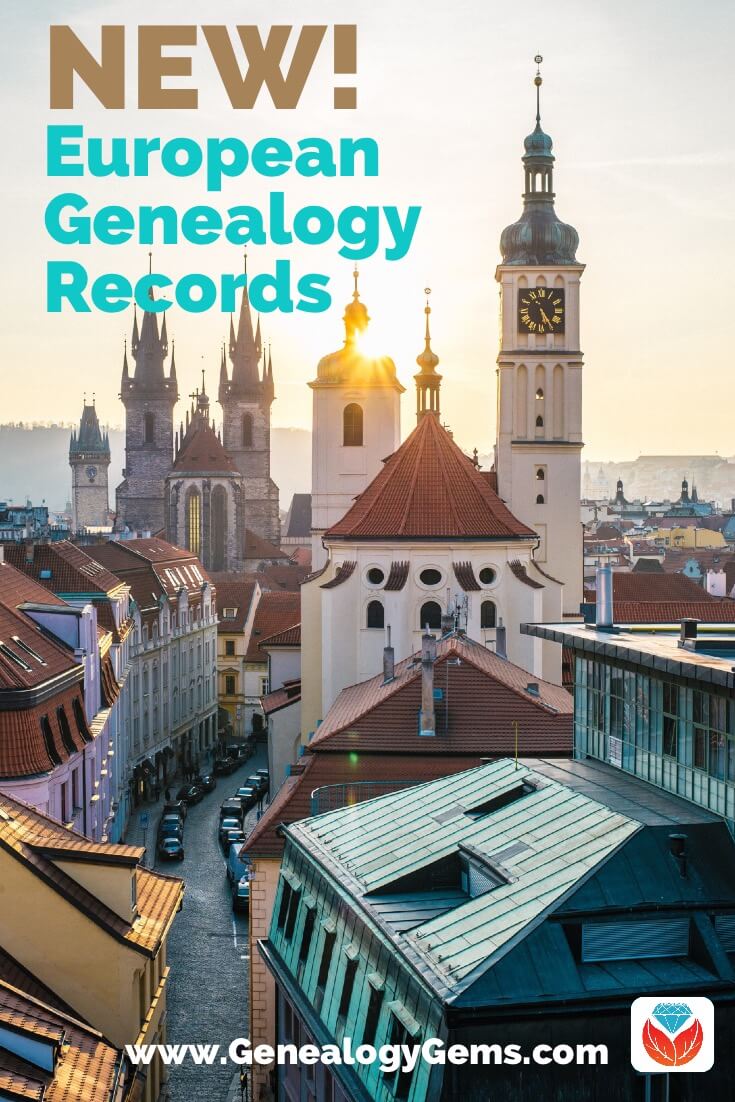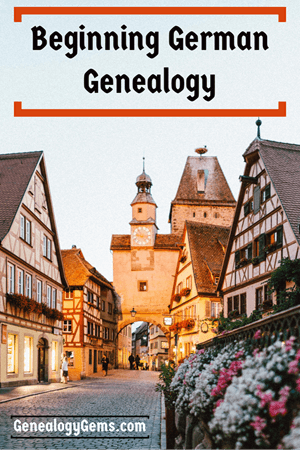Blog

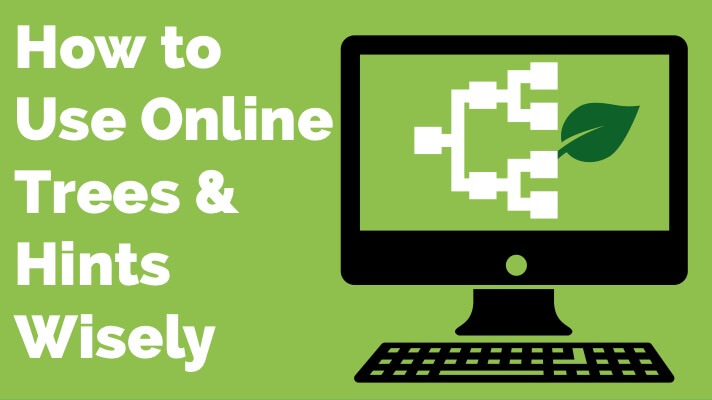
How to Use Online Genealogy Trees and Hints Wisely
Is the tail wagging the dog in your genealogy research? Resist the temptation to jump at each hint and online family tree. Instead, take the lead in your own research and follow the scent of each clue with genealogical best practices. Here’s how…
Almost as soon as you start adding information to your family tree on any of the major genealogy records sites (Ancestry, MyHeritage, Findmypast) you will start getting suggestions. These suggestions are known by a variety of names on the various sites, such as hints, Shaky Leaves, Smart Matches, record matches, etc. No matter what they’re called, they can be a great way to quickly make even more progress in growing your family tree.
There’s an old saying: you get what you pay for. In the case of hints, you have technically paid for them by subscribing to the genealogy website’s service. However, you didn’t pay for them through careful research following solid genealogical methodology. You haven’t yet verified their accuracy, or in the case of suggested online family tree, verified their sources.

Online family trees are one of the most common types of hints you’ll receive. And it’s no wonder: there are billions of names entered in online family trees*, so your tree is very likely to match some of them.
However, with all those matching trees there are bound to be problems. If you’ve been wondering about the reliability and usability of other people’s online family trees being recommended as hints, you’re not alone. Keep reading to learn more about using information gleaned from other’s online family trees.
The question of trusting online family trees
Brenda is a Premium eLearning member, and she wrote me recently with a question about using online family trees:
“I’m just getting back into my genealogy research after 10 years of not having time. It seems that research has completely changed to online work! I’m getting [hints that link to other] family lines, but can I trust them?”
And this related question comes from Douglas:
“Weekly, I get emails with family tree matches, asking me to confirm the match. My problem is not with the matching but with when I dig into their tree, the source for their information is another tree. That info may be a clue but I learned way back that the info needed to be backed up by good primary and sometimes secondary sources, not what somebody thought was right. Info that I entered in my tree years ago and found subsequently to be wrong is still hanging out in a dozen trees. What is your opinion?”
My guess is that at some point you’ve had some of the same questions as Brenda and Douglas. Am I right? Well, even though it’s exciting to find someone who’s already built a family tree that includes your ancestors, it’s important to proceed with caution. Avoid the temptation to “graft” or copy the tree onto your tree.
That’s not to say you should ignore online trees. Instead, let’s discuss how reliable they are and how to use them wisely and responsibly.
How to use online family trees as hints
Douglas has stated the problem accurately. The researchers behind those tantalizing trees may have made mistakes or copied unfounded information without verifying it. Unfortunately, this is a very common occurrence.
Once copied to one tree, incorrect information can easily get picked up by others and copied over and over again. And the problem is made worse because the more it’s copied, the more unskilled researchers may assume it must be accurate because they see everyone using it. It’s a vicious circle indeed!
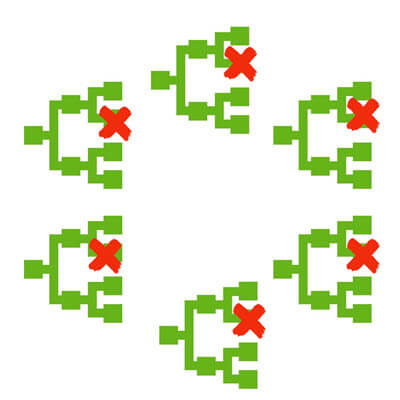
Mistakes can happen in online family trees
Approach every online hint and tree as a clue – a lead – to be considered and scrutinized. You won’t know the accuracy of it for sure until you review the research and verify the sources. That being said, the next logical questions would be “how in the world will I have enough time to verify all of the information in all of these trees?”
The answer is, you don’t.
Instead, do your own genealogical research first, one person and one generation at a time. Work from the present generation backward and learn everything you can from known and trusted primary and secondary sources. If this idea sounds new to you, I strongly encourage you to start listening to my Family History: Genealogy Made Easy podcast. It’s free, and available here on my website, as well as through all major podcast apps. If you’re new to genealogy or returning after a long spell, this podcast will cover the basics in genealogical research and help you get on track.
 It’s easy to let other people’s online trees give you a false sense that you are quickly and easily building your own family tree, but it’s just not true. A tree worth having is a tree worth researching. Don’t let the tail wag the dog here. Follow the proven genealogical research process, and then tap into online family trees when you need a fresh new lead.
It’s easy to let other people’s online trees give you a false sense that you are quickly and easily building your own family tree, but it’s just not true. A tree worth having is a tree worth researching. Don’t let the tail wag the dog here. Follow the proven genealogical research process, and then tap into online family trees when you need a fresh new lead.
Automated record hints and matches
On genealogy websites, you’ll get two types of automated hints or matches. The first is for other people’s trees, which we’ve already discussed. The second is for historical genealogical records.
In order to deliver the historical record hint, the website has compared the data on your tree with the data available in the transcriptions of their records. Since many people share the same name and other distinguishing characteristics like birth dates, it’s important to look at each record closely and carefully.
Review both the record transcription and the digitized image of the document (when available), keeping in mind that not all the useful genealogical data is always transcribed. And in the process of transcribing, errors may have been made.
You first want to evaluate whether this document pertains to your relative. Next, you will need to determine what else it adds to your knowledge of them. Compare what that document says to what you’ve already learned about your family. Watch for multiple, specific pieces of evidence that support or are consistent with what you already know.

Genealogy Giants guru Sunny Morton says that “record hints on Genealogy Giants FamilySearch and MyHeritage are especially known for a high degree of accuracy; Ancestry.com’s are generally pretty good, too, but the site is clear about reminding you that these are just hints. I don’t have data on how accurate Findmypast hinting is, but I do know that they’ve been adding more records to the pool of records they hint on, and that’s also good.”
 After reviewing all the record hints you’ve received, conduct additional searches yourself for records about each ancestor. Use the same process described above to scrutinize and evaluate each record.
After reviewing all the record hints you’ve received, conduct additional searches yourself for records about each ancestor. Use the same process described above to scrutinize and evaluate each record.
Remember that even a digitized record hosted on one of the major websites can have transcription, spelling, or other errors, and sometimes you’ll have to make judgment calls. There’s no substitute for your brain! And there’s no substitute for carefully verifying and documenting every discovery as you go.
Next steps for using hints and trees wisely
By using hints for online family trees and historical records as leads when needed rather than the main path to follow will help you build an accurate family tree.
We are here to help you take control of your family tree and your research every step of the way. For specific information about reviewing record hints, read Getting started on Ancestry.com.
When you do find errors in someone else’s tree, here’s some sound advice for How to approach someone about errors on their family tree.
And finally take a moment to read Don’t lose control when you post your family tree online.
If you’re a Genealogy Gems Premium eLearning member like Brenda, I suggest Genealogy Gems Premium Podcast episode 152. It features my audio interview with Sunny Morton on take-home strategies for using hinting tools at the Genealogy Giants.
About the Author: Lisa Louise Cooke is the Producer and Host of the Genealogy Gems Podcast, an online genealogy audio show and app. She is the author of the books The Genealogist’s Google Toolbox, Mobile Genealogy, How to Find Your Family History in Newspapers, and the Google Earth for Genealogy video series, an international keynote speaker, and producer of the Family Tree Magazine Podcast.
Disclosure: This article contains affiliate links and Genealogy Gems will be compensated if you make a purchase after clicking on these links (at no additional cost to you). Thank you for supporting Genealogy Gems!
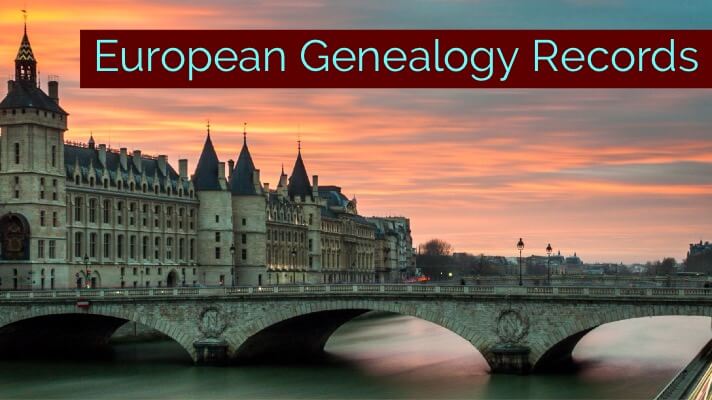
New European Genealogy Records Online
This is the week to explore new European genealogy records online! This weekly record roundup covers four areas of England as well as France, Germany, Ireland, Luxembourg, Scotland, Spain and Sweden. Boost your family history research by keeping up with new records that may mention your ancestors.
European genealogy records for 8 countries
Explore your European roots with these new and updated family history records on three of the Genealogy Giants websites: Ancestry.com, FamilySearch, and Findmypast. If you find anything exciting about your ancestors, we’d love to hear about it! Leave a comment below or contact us here at Genealogy Gems.
England genealogy records
Berkshire. New at Genealogy Giant Findmypast is Berkshire Registers & Records, in which subscribers may “explore PDF images of registers and records from the English county of Berkshire. Discover your ancestors in parish registers of baptisms, marriages and burials from the parishes of Leckhamstead and St Mary in Reading.”
Collections at Ancestry: Explore the following collections at Ancestry by going to Ancestry here and then in the menu Search > Card Catalog > and search the name of the collection we list below.
Cambridgeshire. The Cambridgeshire, England, Electoral Registers, Burgess Rolls and Poll Books, 1722-1966 collection has nearly 1.7 million records. According to the collection description, “This database contains yearly registers listing names and residences of people in Cambridgeshire, who were eligible to vote in elections. These year-by-year registers can help place your ancestors in a particular place and possibly also reveal a bit about property they owned.”
A related new collection at Ancestry.com is Cambridgeshire, England, Juror Books, 1828-1883 contains over 20,000 records of “of those qualified to serve as a juror in the county of Cambridgeshire between the years 1828 and 1883. Qualifications were based on ownership of land or property and therefore excluded the majority of residents….This collection includes residents of Cambridgeshire as well as those living in the historic county of Huntingdonshire and historic region of the Isle of Ely, both of which now fall under the administration of Cambridgeshire.”
Durham. Findmypast has also published Durham Registers & Records, which consists of “baptism, marriage and burial registers covering 14 parishes [in this northeastern England county] as well as a guide to the “Antiquities of Sunderland and its vicinity.”
London. Findmypast has added over 109,000 new records to its Greater London burial index. New additions cover Middlesex and British deaths overseas. “The records consist of transcripts that may reveal a combination of your relative’s name, age, occupation, religious denomination and where they were buried.”
France genealogy records
Coutances et d’Avranches. The free Genealogy Giant, FamilySearch, has added about 13,000 records to its collection, France, Coutances et d’Avranches Diocese, Catholic Parish Records, 1533-1894. According to the site, you’ll find a “name index and images of Catholic parish registers recording events of baptism, marriage and burial in the Diocese of Coutances et d’Avranches. Parishes within this diocese are within the boundaries of the department of Manche.”
Saône-et-Loire. Also at FamilySearch is a new online record collection: France, Saône-et-Loire, Censuses, 1836. Included are more than 380,000 records that are described as “a complete indexing of the population censuses for Saône-et-Loire.” Census records include first and last names, ages, marital status, number in household and relation to the head of household. (Click here for a free FamilySearch tutorial on reading French handwriting.)
Here’s a tip for you: click on the image to the right to explore more French genealogy records that have recently come online.
Germany genealogy records
About 70,000 records have been added to the free FamilySearch collection, Germany, Baden, Archdiocese of Freiburg im Breisgau, Catholic Church Records, 1678-1930. Among the records are baptisms, marriages and burials. Also recently updated on the site is a related collection, Germany, Baden, Church Book Duplicates, 1804-1877.
Ireland genealogy records
FamilySearch.org has updated its indexed collection, Ireland Civil Registration, 1845-1913. It now includes over 2 million records of “1864-1913 births, 1845-1870 marriages, and 1864-1870 deaths. These are copies of the original documents and volumes held at the General Register Office and are referenced in the Ireland Civil Registration Indexes,” states the site.
Luxembourg genealogy records
Now with over 100,000 records available to search is Luxembourg, Civil Registration, 1796-1941 at FamilySearch.org. These include “images of civil births, marriages, deaths, and indexes. Some records are indexed, including births 1800-1923, marriages 1796-1923, and deaths 1796-1923. The original registers are located in the National Archives of Luxembourg.”
Scotland genealogy records
Now at Findmypast.com, subscribers may “learn about the Jacobites and the Jacobite Risings of the 17th and 18th centuries” in Scotland, Jacobite Histories, 1715-1745. This collection of 23 publications ranges “from memoirs to song books” and consists of “digital PDF images that can be searched by name, conflict, publication title, year and keyword.”
Spain genealogy records
Free at FamilySearch.org are additional records in its collection, Spain, Diocese of Lugo, Catholic Parish Records, 1550-1966. This index-only database references baptisms, marriages, and deaths mentioned in Catholic Church records created by parishes in the diocese of Lugo, Spain.
Sweden genealogy records
FamilySearch.org has updated its collection of Sweden, Örebro Church Records, 1613-1918; index 1635-1860. It now contains over 380,000 baptisms, marriages, and burials from the county of Örebro.
Learn more about European genealogy records
Improve your knowledge of researching your roots from various European countries with these free get-started tutorials:

About the Author: Sunny Morton
Sunny is a Contributing Editor at Lisa Louise Cooke’s Genealogy Gems; her voice is often heard on the Genealogy Gems Podcast and Premium Podcasts. She’s known for her expertise on the world’s biggest family history websites (she’s the author of Genealogy Giants: Comparing the 4 Major Websites); writing personal and family histories (she also wrote Story of My Life: A Workbook for Preserving Your Legacy); and sharing her favorite reads for the Genealogy Gems Book Club.
Disclosure: This article contains affiliate links and Genealogy Gems will be compensated if you make a purchase after clicking on these links (at no additional cost to you). Thank you for supporting Genealogy Gems!

Findmypast and Living DNA to provide genetic genealogy testing
Here’s exciting genetic genealogy news that you’ll want to know about.
Findmypast and Living DNA have announced a new partnership. The two leading British companies are creating a new DNA experience focused on uncovering British & Irish roots.
This new service will be launched in the Fall of 2018. You can purchase a Living DNA kit right now to get your detailed ethnicity results, interactive map of your heritage throughout history, and family line ancestry (including mother line, and father line for males). As their database grows, your results will automatically be updated to reflect even more accurate results. According to Findmypast, when the Findmypast integration is officially launched later this year, all existing Living DNA test takers will be given the option to opt-in to receive DNA matching at no extra cost. Stay tuned to Genealogy Gems for more official announcements and updates!
From the press release issued by Findmypast:
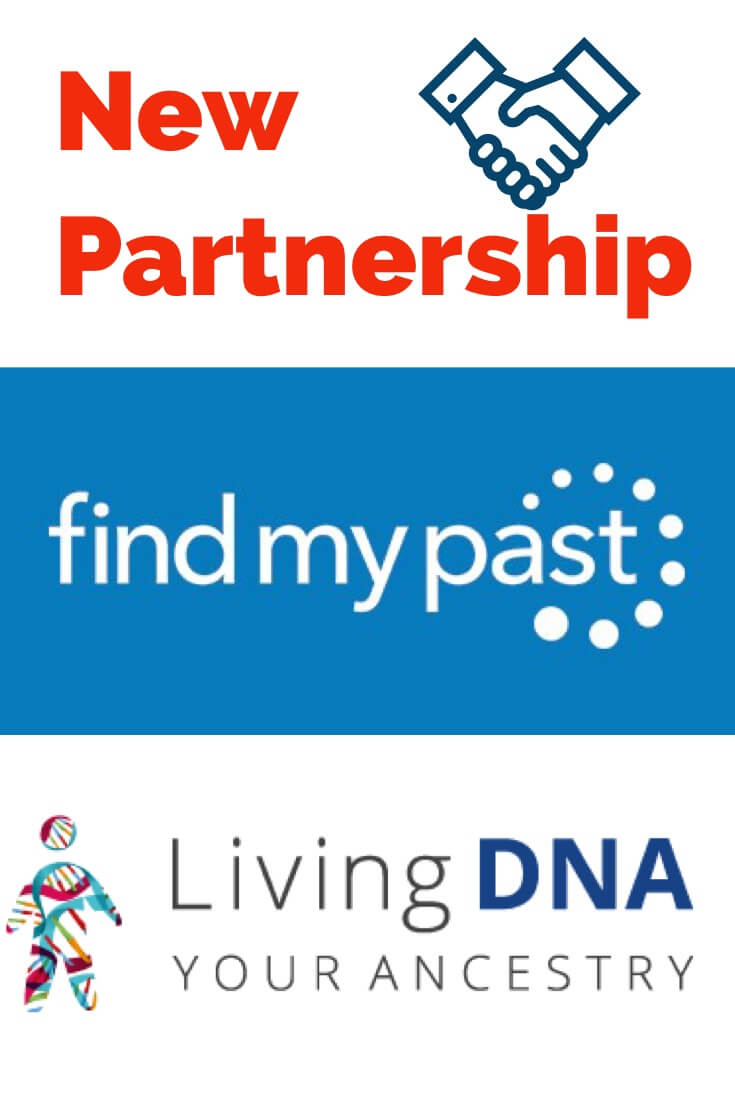
Thursday July 19th: Leading British and Irish family history website, Findmypast, has today announced a new partnership with the providers of the world’s most advanced DNA test, Living DNA.
Together, the two British companies are creating a new DNA experience that is designed to help customers explore their British and Irish roots. This new experience will combine cutting-edge science with traditional family history research methods, allowing families to discover more about their past and present.
Living DNA’s tests provide a unique breakdown of ethnic identities associated with 21 regions across Britain and Ireland by analyzing unique combinations of linked DNA. This proprietary method delivers a level of detail that is currently unmatched by any other test available on the market.
By combining technology from the leading British DNA company with deep expertise and Findmypast’s vast collection of more 9 billion historical records and newspaper articles, family historian’s will be able to make new discoveries about their British & Irish genetic history.
New, co-branded kits will be launched when the integrated Findmypast and Living DNA service is introduced later in the year.
“Our partnership with Findmypast continues Living DNA’s mission to make DNA testing simple. We are passionate at not only providing cutting edge ways of looking at your DNA but to do so with strict privacy measures by never selling your data. This partnership allows the most precise DNA test on the market to work together with Findmypast’s family history records in a way not done before” says Living DNA Co-Founder, David Nicholson.
Tamsin Todd, CEO of Findmypast, said: “As the world leader for British and Irish records, we work hard every day to help our customers feel the thrill of making discoveries about their families. I’m delighted that we are partnering with a British company, Living DNA, who are pioneers in DNA technology, and look forward to combining our expertise in DNA technology and historical records to help people around the world connect with their British and Irish roots.”
Disclosure: This article contains affiliate links and Genealogy Gems will be compensated if you make a purchase after clicking on these links (at no additional cost to you). Thank you for supporting Genealogy Gems!

About the Author: Lisa Louise Cooke
Lisa is the Producer and Host of the Genealogy Gems Podcast, an online genealogy audio show and app. She is the author of the books The Genealogist’s Google Toolbox, Mobile Genealogy, How to Find Your Family History in Newspapers, and the Google Earth for Genealogy video series, an international keynote speaker, and producer of the Family Tree Magazine Podcast.

